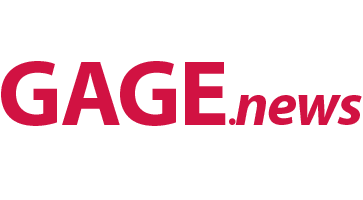Colorado continues to fail to clean the dirty air that hangs over the northern Front Range, so state regulators plan to ask the Environmental Protection Agency for another voluntary air-quality downgrade — meaning more expensive gasoline and tighter regulations on polluters will remain in place for the foreseeable future.
The move will give state regulators more time to develop a plan to improve air quality in metro Denver and the region, and to see whether recent strategies to reduce harmful emissions will work, even as environmentalists call for more aggressive tactics.
“For us, it’s taking ownership of where we are with air quality. We’ve taken a look at the modeling, and the modeling is showing we are not going to be achieving the standard,” said Michael Ogletree, director of the Colorado Department of Public Health and Environment’sAir Pollution Control Division. “By proactively doing this, it is something that allows us to focus our efforts to really continue to improve air quality.”
Ogletree wrote a memo to the Regional Air Quality Council last week announcing his agency’s intention to seek a “severe non-attainment” designation from the EPA for the federal government’s 2015 ozone pollution standards. The EPA already has declared the northern Front Range to be in severe violation of less-stringent 2008 standards.
That memo was sent to the council, a quasi-governmental body that makes recommendations for fixing the region’s air pollution problem, ahead of its Friday meeting.
The state air pollution division has not yet filed paperwork with the EPA, Ogletree said.
“The state recognizes that this is a hard decision to make, but believes taking this step is the only reasonable and responsible path forward given the reality of the region’s circumstances,” he wrote in the memo.
The request for a downgrade on the 2015 ozone standards is the second voluntary downgrade the state has made in less than a year. In July, officials asked that metro Denver and the northern Front Range be designated as being in serious violation of those standards.
But with another failure on the horizon, the state decided to get ahead of the EPA’s review of ozone pollution levels, Ogletree said.
Environmentalists said the state’s inability to reduce air pollution supports their warnings that Colorado’s public health agency and Gov. Jared Polis are not doing enough to tackle the problem even as Ogletree wrote that the state was committed to “bold work” to improve air quality.
“The state is facing a difficult position where it’s clearly failing and they are trying to buy themselves time to do more,” said Jeremy Nichols, senior advocate with the Center for Biological Diversity. “In spite of strong rhetoric from the Polis administration, here we are with another failure when it comes to protecting the environment and people. It’s unacceptable.”
The nine-county region — Adams, Arapahoe, Boulder, Broomfield, Denver, Douglas, Jefferson, Larimer and Weld counties — has been out of compliance with federal ozone standards for 17 years. That pollution causes an ugly brown smog to blanket the skyline on hot summer days and causes people, especially those with respiratory problems, to struggle to breathe.
The continued failure to reduce ozone pollution has led the American Lung Association to place the Denver-Aurora area on its top 10 list of most polluted cities in the country.
Ground-level ozone pollution, which forms when nitrogen oxides and volatile organic compounds mix in hot temperatures, also damages plants and trees, causing them to grow slower and become more susceptible to disease and insects. Ground-level ozone also is a greenhouse gas that contributes to climate change, which causes hotter summers, which in turn increases ozone pollution.
Failing to meet two air-quality standards
Metro Denver and the northern Front Range are failing two air-quality standards.
The first missed benchmark is a requirement under the federal Clean Air Act to lower average ozone pollution to a 2008 standard of 75 parts per billion. The northern Front Range was listed as being in severe non-attainment for that standard in September 2022, and has until 2027 to reach that pollution level.
The second benchmark, which the state is now admitting it will fail to reach, is to lower average ozone pollution to a 2015 standard of 70 parts per billion. The state now will ask the EPA to classify the region as being in severe non-attainment for that level and will have until August 2032 to improve.
However, Colorado’s three-year clock for reaching the 2008 goals started ticking last summer — and the Front Range got off to a bad start.
The summer ozone season runs from June 1 to Aug. 31, but the Front Range’s 2024 ozone levels exceeded federal standards on 28 days during the first two months of the season, which was more than was recorded during the entirety of summer 2023. While the official ozone season lasts for three months, Denver and the northern Front Range saw the first bad ozone day last year in May and poor air-quality alerts extended well into September.
When a region is designated as being in severe non-attainment, people who live in the area are required from June to mid-September to use reformulated gasoline — a special, more expensive blend that burns cleaner — and more companies are pushed into an emissions category that requires more stringent and costly permitting. The Front Range already is doing those things after it failed to reach the 2008 ozone standards and now it will need to continue at least until 2032 as it tries to attain the 2015 standard.
One change that the new severe classification for 2015 ozone standards would bring: A swath of northern Weld County previously exempt from those measures would now be covered by them. That would affect a handful of oil and gas operators, Ogletree said.
The advantage of asking for the voluntary downgrade is that Colorado will avoid potential sanctions. The state would not be able to demonstrate to the EPA that it could meet the 2015 goals in time, and the government could have withheld federal highway funding as a penalty, Ogletree said.
New rules to reduce emissions
Ogletree listed in his memo 10 new rules the state has adopted since 2023 that are aimed at curbing ground-level ozone pollution. Those plans included getting more electric cars and trucks on the roads, reducing nitrogen oxides emissions within the oil and gas industry, and requiring Colorado’s 18 largest manufacturers to reduce their greenhouse gas emissions.
All of the 10 new rules are predicted to reduce emissions by 11,110 tons per year by 2032, he said.
The memo noted that Colorado’s ozone problem is exacerbated by the mountain topography that traps air along the Front Range, intense summer heat and sunlight that help form the pollution, and western wildfires that blow smoke into the state.
But the document did not mention oil and gas extraction or automobile exhaust, leading to criticism from environmentalists.
“Someone needs to remind Michael Ogletree it’s an air pollution problem and he’s the air pollution director. We are looking to him to provide solutions and not make excuses,” Nichols said. “It’s not a mountain problem. It’s not a weather problem. It’s not a fire problem. It’s a pollution problem.”
Foul air robs people of a healthy, productive life, said Ean Tafoya, vice president of state programs for GreenLatinos.
Children miss school when they have severe asthma attacks and their parents miss work to care for them. Inhalers and emergency room visits are expensive for families to buy and put a burden on state Medicaid expenses, he said.
“This is about our burning of fossil fuels and about our extracting of fossil fuels,” Tafoya said. “The only way we are going to clean up our air is to turn away from burning this stuff that pollutes our air.”
Get more Colorado news by signing up for our Mile High Roundup email newsletter.
The post Colorado to ask EPA to further downgrade northern Front Range’s air quality appeared first on Denver Post


